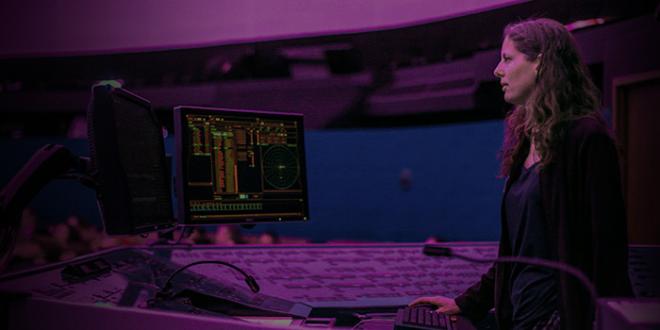From graduate students to faculty members, scientific researchers generally receive training in writing technical documents. Usually these documents are intended to communicate findings to other scientists.
But what about the non-scientists in the world, who are either personally interested in results of studies, or need to understand research to better inform policy or management decisions? They may find themselves staring blankly at dense, impenetrable text. Similarly, verbally explaining technical concepts to the general public has proven to be a difficult task for researchers.
While immersed in such specialized information, how can scientists learn to effectively communicate their work to those without a technical background? Enter new initiatives in science communication, an area of training which arms researchers with skills allowing them to translate their findings into concepts understandable to a lay audience. Recently, Dr. Amy Sayle taught a tightly packed room full of UNC researchers how to do just that. Dr. Sayle is a public educator working in the Morehead Planetarium and Science Center. The workshop was part of a science communication series co-hosted by Training Initiatives in Biomedical & Biological Sciences (TIBBS) and the Science Writing and Communication Club (SWAC) at UNC.

Throughout the workshop, Dr. Sayle provided advice on how scientists can make their writing more generally comprehensible. Some helpful hints included:
- Remove unnecessary details. For example, the audience doesn’t need to know your model specifications or how you calibrated your instruments.
- Choose only the most important take-home messages. Don’t clutter their minds with too much information.
- Put your results in context – why should the audience care? How does it relate to something they’ve recently seen in the media, or something they experience on a regular basis?
- Use shorter sentences and paragraphs than you would in a technical piece. It will make it easier to digest.
One exercise in particular required participants to sit next to someone they did not know and who worked in a different field. Throughout the workshop, we had brief meetings with our neighbors and exchanged short written pieces that described our research. Our neighbors would read them, then write a list of all the words or phrases that were unclear.
When I wrote my research description a few days before the workshop, I read it repeatedly and edited it to remove unnecessary jargon, or to clearly define existing jargon. In spite of these efforts, my neighbors still found many terms unclear, including words that I had often assumed my audience would understand. Using their feedback, I worked on reducing and clarifying technical concepts. It’s amazing how much you can simplify your writing when you show it to someone outside your field!
So if you’re a scientist and someone at a dinner party asks what you study, think about your word choice. Instead of delving into technical terms and details, simplify your language and focus on the broader implications of your research. Instead of seeing the furrowed eyebrows of a confused audience, you should be met with attentive looks and engaging conversation. Fortunately, training initiatives in science communication, such as Dr. Amy Sayle’s workshop, are becoming more prevalent and help bridge the gap between scientific research and society as a whole.
Peer edited by Aminah Wali
Follow us on social media and never miss a science communication article: